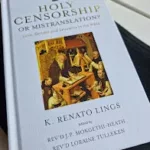The LGBTQ issue has always created friction between the way we understand and interpret the Bible’s view of holiness and how we as pastors are to preserve order, caring for and counselling LGBTQ people. The greatest dichotomy is perhaps between whether we are called to “liberate” LGBTQ people or to have a conversation with LGBTQ people, where we recognize their reality and grapple with how to understand and apply the Bible’s message in their daily lives and struggles.
Here one must distinguish carefully between those struggling with their sexuality (I don’t know what I am) and those who wrestle with how to deal with their sexuality (I don’t know how to live with whom I am when reality looks like this). With the first group one could present heterosexuality as one of many ways out, or the only way out (depending on what perspective on LGBTQ you have (see next post four different ways of dealing with LGBTQ issue)). The problem with this approach is that we have no sure way to distinguish between these groups, and it can probably be said that almost all of the latter group first belonged to the former group. And even if we were able to distinguish who is actually a gay person who is not with any certainty, we must concede that all approaches to pastoral care become much more complicated if we can not present one sexual ethics across the board. Furthermore, we must also acknowledge and consider the third group of people, those who do not wrestle with their sexuality but are completely comfortable with being GLBTQ people and live a normal life enjoying their sexuality. Do we have no gospel (good news) to them? Did Jesus not bring any good news for them?
What we need is a way to talk about loyalty, love, commitment, affection and sex without having to distinguish between LGBTQ people and heterosexual people.
In the Evangelical churches are currently forcing LGBTQ people to a promiscuous life by stigmatising LGBTQ sexuality, branding it as sinful (Svartvik, 2006:307, Wink et al. 1999: 92). It is quite easy to hide the occasional short relationship in a congregation, however, it is almost impossible to keep a commited, loving relationship secret if one is to be an active member of a congregation (Wink et al. 1999: 92). Therefore, it is from a pastoral perspective better to affirm and support LGBTQ people in their relationships and thus be able to guide these people to faithfulness, love and tenderness, instead of condemning and thereby indirectly force these people to choose between the church community or a loving committed relationship.
If one permits oneself to be persuaded by the scientific studies that are available one must quickly realise that LGBTQ is nota a lifestyle choice a person makes, to the contrary many LGBTQ people would choose to be Heterosexual if they had the opportunity. Then you also have to realise that it is close to spiritual abuse to force someone to live against their nature. It is physical and spiritual abuse to force a sexual being to a lifetime of celibacy. Not to mention that celibacy is a spiritual gift that no pastor or church community has any right or opportunity to hand out to anyone, only God’s Spirit can hand out gifts of the Spirit (Wink et al. 1999: 86).
If one is to welcome LGBTQ people into the church, there must be a well-developed strategy for how to meet these people’s pastoral needs without abusing them as human beings and sexual creatures.
- LGBTQ – Prelogos
- LGBTQ part 1 – Introduction
- LGBTQ part 2 – Hermeneutics
- LGBTQ part 3 – Science
- LGBTQ part 4 – Scripture
- LGBTQ part 5 – Jesus
- LGBTQ part 6 – Double standards
- LGBTQ part 7 – Pastoral care
- LGBTQ part 8 – Four possible approaches
- LGBTQ part 9 – The Salvation Army
- LGBTQ part 10 – Recommended reading
- LGBTQ part 12 – coming out
- LGBTQ part 11 – Continued conversation
- Before you “come out” as a LGBTQ ally in church…








